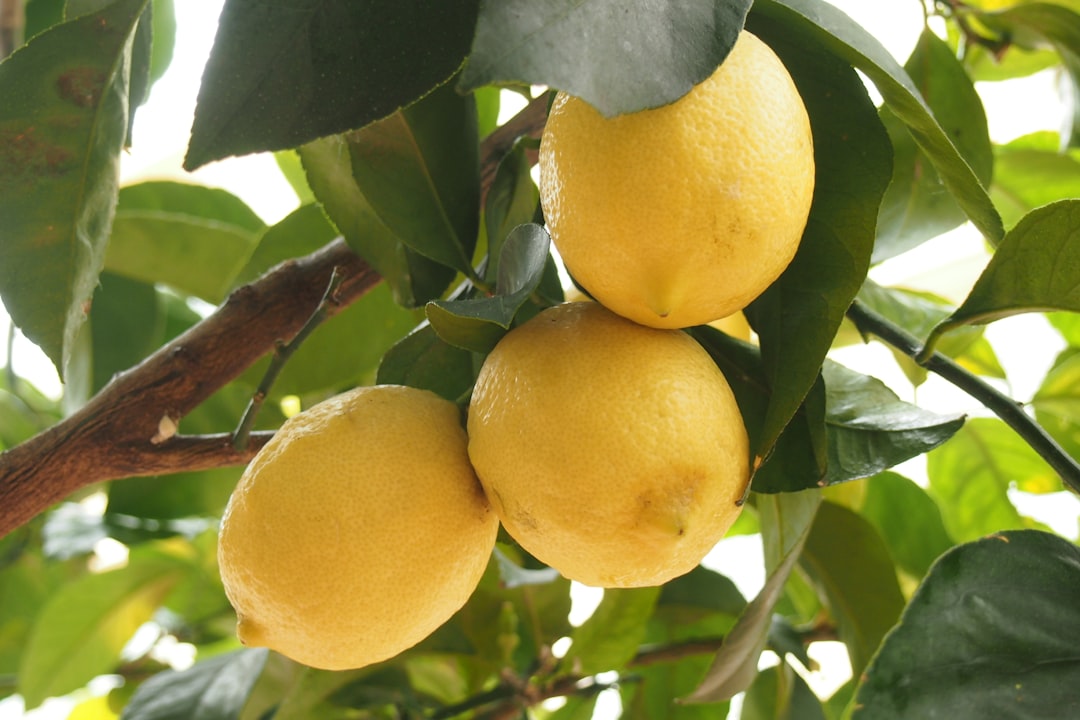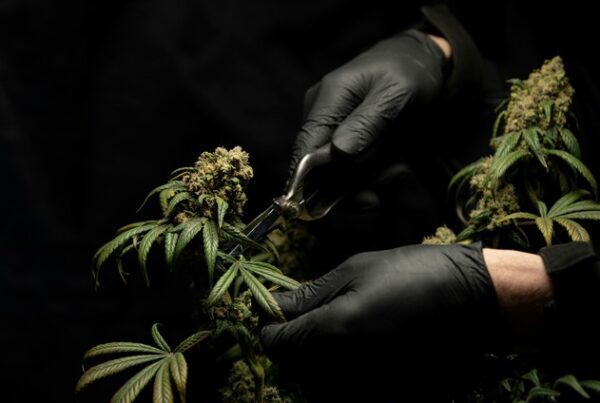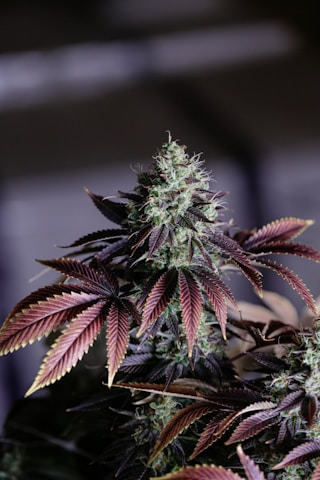
Are you searching for a cannabis strain with a unique flavor profile and powerful medicinal properties? Look no further than the Lemon Tree strain. This strain is known for its distinct aroma and potent effects, making it a favorite among both recreational and medicinal users.
The Lemon Tree strain offers a variety of benefits. Its uplifting and energizing effects make it perfect for daytime use, while its calming properties can help alleviate stress and anxiety. Additionally, this strain has been reported to provide relief from chronic pain and inflammation.
Tips for Growing the Lemon Tree Strain
When it comes to growing the Lemon Tree strain, there are a few tips and tricks to keep in mind:
- Choose high-quality seeds from a reputable source like Original Johnny Seed Bank.
- Optimize the growing conditions by providing ample sunlight or using grow lights.
- Ensure your plants receive the right balance of nutrients.
- Maintain proper humidity and temperature levels for optimal growth.
- Prune and train your Lemon Tree plants to maximize yield and promote even canopy development.
- Monitor the trichomes to determine the perfect moment for harvest.
Ready to start growing your own Lemon Tree strain? Visit Original Johnny Seed Bank for a wide selection of high-quality cannabis seeds. Happy growing!
Choosing the Right Seeds from Original Johnny Seed Bank
Choosing the right seeds is a crucial step in starting your Lemon Tree growing journey. Original Johnny Seed Bank offers a wide selection of high-quality seeds, including CBD-rich hybrid, indica, and sativa seeds. The Lemon Tree strain is known for its unique aroma and potent effects, making it a popular choice among cannabis enthusiasts.
Original Johnny Seed Bank stands out from other seed banks because of its exclusive features and guarantees. They prioritize quality and reliability, ensuring that each seed is carefully selected and tested for viability. This means that you can have peace of mind knowing that you are purchasing seeds that have a high germination rate and will grow into healthy plants.
Consider Your Desired Experience and Growing Conditions
When selecting Lemon Tree seeds, it’s important to consider your desired experience and growing conditions. Here are some options:
- CBD-rich hybrid seeds: Provide a more balanced effect
- Indica seeds: Known for their relaxing and sedating qualities
- Sativa seeds: Popular for their energizing and uplifting effects
To optimize the growing conditions for your Lemon Tree plants, it’s essential to provide them with:
- Right amount of sunlight: Lemon Tree plants thrive in a warm and sunny environment, so ensure they receive at least 8-10 hours of direct sunlight each day. If growing indoors, consider using grow lights.
- Proper nutrition: Follow Original Johnny Seed Bank’s expert advice on feeding your plants with a balanced nutrient regimen. Avoid overfeeding to prevent nutrient burn.
- Humidity and temperature control: Aim for a humidity level of around 40-50% during the vegetative stage and slightly lower humidity (30-40%) during the flowering stage. Keep the temperature between 70-85°F (21-29°C) for optimal growth.
Pruning and training your Lemon Tree plants can also maximize yield and promote even canopy development. Techniques such as topping, low-stress training (LST), and defoliation can help shape your plants and optimize their growth. Original Johnny Seed Bank provides expert advice on identifying signs in cannabis plants and fixing any issues that may arise during the growing process.
Harvesting your Lemon Tree plants at the right time is crucial to achieve the desired effects. Monitor the trichomes (resin glands) on the buds using a magnifying glass or microscope. Harvest when the trichomes are mostly cloudy with a few amber ones for a balanced effect.
Legal Regulations and Recommendations
Before starting your Lemon Tree growing journey, familiarize yourself with the legal regulations in your jurisdiction. The seeds offered by Original Johnny Seed Bank are compliant with the 2018 Farm Bill, containing less than 0.2% THC. It’s always recommended to consult with a physician before using any hemp products.
By choosing the right seeds from Original Johnny Seed Bank and following the tips and tricks mentioned above, you can successfully grow your own Lemon Tree plants. Visit the Original Johnny Seed Bank website to explore
their wide variety of strains
and find the perfect seeds for your Lemon Tree adventure. Happy growing!
Growing the Lemon Tree Strain: Key Factors for Successful Cultivation
When it comes to growing the Lemon Tree strain, providing the optimal growing conditions is crucial for a successful cultivation. Let’s explore some key factors that can help you achieve the best results.
Temperature and Humidity
Temperature and humidity play a significant role in the growth of Lemon Tree plants. It is important to provide specific temperature ranges and humidity levels that are ideal for this strain. During the vegetative stage, a humidity level of around 40-50% is recommended, while slightly lower humidity (30-40%) is preferred during the flowering stage. In terms of temperature, aim to keep it between 70-85°F (21-29°C) for optimal growth.
Environment
Another vital factor to consider is the environment in which you grow your Lemon Tree plants. These plants thrive in warm and sunny conditions, so it’s essential to ensure they receive at least 8-10 hours of direct sunlight each day. If you’re growing indoors, using grow lights can be a great option to provide the necessary light intensity. This will mimic the natural sunlight and promote healthy growth. Indoor cultivation using grow lights has become a popular choice for many growers. With advances in technology, grow lights can now provide the specific light spectrum needed for optimal plant growth. This means you can create a controlled environment that meets the exact lighting requirements of the Lemon Tree strain. Whether you choose fluorescent, LED, or HID lights, make sure to select the appropriate wattage and adjust the height to maintain the right amount of light for your plants.
Nutrition
In addition to temperature and lighting, it’s important to provide your Lemon Tree plants with proper nutrition. A balanced nutrient regimen is essential for healthy growth and development. Consult expert advice on feeding your plants and follow the recommended dosage. Overfeeding can lead to nutrient burn, so be mindful of providing the right amount of nutrients to avoid any potential issues.
Pruning and Training
To maximize yield and promote even canopy development, pruning and training your Lemon Tree plants can be beneficial. Techniques such as topping, low-stress training (LST), and defoliation can help shape the plants and create an optimal growing environment. By removing excess foliage and training the branches, you can ensure that each bud receives sufficient light and airflow, leading to higher yields and healthier plants.
Harvesting
When it comes time to harvest your Lemon Tree plants, it’s important to monitor the trichomes (resin glands) on the buds. Using a magnifying glass or microscope, observe the trichomes to determine the ideal time to harvest. Harvesting when the trichomes are mostly cloudy with a few amber ones will result in a balanced effect. This will ensure that you achieve the desired potency and flavor profile of the Lemon Tree strain.
Legal Regulations
Before embarking on your Lemon Tree growing journey, it’s crucial to familiarize yourself with the legal regulations in your jurisdiction. Ensure that you are compliant with the laws regarding cannabis cultivation and use. The seeds offered by Original Johnny Seed Bank are compliant with the 2018 Farm Bill, containing less than 0.2% THC. As always, it’s important to consult with a physician before using any hemp products.
Optimizing Growing Conditions
By optimizing the growing conditions for your Lemon Tree plants, you can enhance their growth, yield, and overall quality. Remember to pay attention to temperature, humidity, lighting, nutrition, and training techniques. With careful attention to detail and adherence to best practices, you can enjoy a successful cultivation experience with the Lemon Tree strain. Happy growing!
Providing Proper Nutrition for the Healthy Growth of the Lemon Tree Strain
When it comes to growing the Lemon Tree strain, providing proper nutrition is essential for the healthy growth and development of your plants. A balanced nutrient regimen tailored specifically for this strain can make a significant difference in the overall yield and quality of your harvest. Let’s take a closer look at the essential nutrients necessary for optimal plant development and why seeking expert advice or consulting with professionals is crucial in ensuring proper feeding practices.
The Importance of Nutrient Requirements for the Lemon Tree Strain
The Lemon Tree strain is known for its unique aroma and potent effects, making it a popular choice among cannabis enthusiasts. To maximize the potential of your Lemon Tree plants, it’s important to understand the specific nutrient requirements that will support their growth. While there are general guidelines for feeding cannabis plants, tailoring the nutrient regimen to the Lemon Tree strain can help address its unique needs.
Essential Nutrients for Healthy Growth
The primary essential nutrients necessary for the healthy growth of any cannabis plant include nitrogen, phosphorus, and potassium (N-P-K). Nitrogen is crucial for promoting vigorous vegetative growth, phosphorus aids in root development and flowering, and potassium contributes to overall plant health and disease resistance. However, each stage of growth requires different nutrient ratios to support optimal development.
Nutrient Ratios for Different Growth Stages
During the vegetative stage, Lemon Tree plants benefit from a higher nitrogen content to encourage lush foliage and strong branching. As the plants transition into the flowering stage, a higher phosphorus content becomes essential to promote bud development and enhance resin production. Adjusting the nutrient ratios accordingly throughout the plant’s lifecycle can help achieve the best results.
Seeking Expert Advice for Proper Feeding
To ensure that you are providing the right nutrients in the correct amounts, it’s highly recommended to seek expert advice or consult with professionals who have experience growing the Lemon Tree strain. They can provide valuable insights and guidance based on their expertise, helping you avoid common pitfalls and maximize the potential of your plants.
Other Essential Nutrients
In addition to nitrogen, phosphorus, and potassium, other essential nutrients such as calcium, magnesium, and trace elements like iron, zinc, and manganese play critical roles in plant health and development. Maintaining proper nutrient balance is key to preventing deficiencies or nutrient burn, which can negatively impact the growth and yield of your Lemon Tree plants.
Consulting the Proper Nutrient Balance
By consulting the webpage on proper nutrient balance for cannabis plants, you can access expert advice on feeding your plants and follow recommended dosage guidelines. It’s important to remember that overfeeding can be just as detrimental as underfeeding, so it’s crucial to strike the right balance.
Providing proper nutrition is a crucial aspect of growing the Lemon Tree strain successfully. Tailoring a balanced nutrient regimen to the specific needs of this strain can significantly enhance its growth and yield. Seeking expert advice or consulting with professionals who have experience with this strain is highly recommended to ensure that you are meeting the unique nutrient requirements of the Lemon Tree plants. Remember, a well-fed plant is a happy and healthy plant!
Maintaining Proper Humidity and Temperature for Successful Cannabis Cultivation
Proper humidity and temperature levels are crucialfor successful cannabis cultivation. In this section, we will explore the ideal humidity ranges during the vegetative and flowering stages of growth, discuss the importance of stable temperature, and provide tips for effectively controlling humidity and temperature levels.
Ideal Humidity Ranges
During the vegetative stage, it is recommended to maintain a humidity level of around 40-50%. This range provides the right balance for healthy plant growth and minimizes the risk of mold and mildew development. High humidity can create a favorable environment for fungal diseases, while low humidity can cause plants to dry out and stunt their growth. By keeping the humidity within the recommended range, you can ensure optimal conditions for your plants to thrive.
As the plants transition to the flowering stage, it is advisable to slightly lower the humidity to around 30-40%. This decrease in humidity helps promote bud development and prevents excessive moisture that can lead to bud rot. It is important to monitor the humidity levels closely during this stage to prevent any issues that may arise from fluctuations.
The Importance of Stable Temperature
Aside from humidity, maintaining a stable temperature is equally important for the overall health and productivity of your cannabis plants. The ideal temperature range for cannabis cultivation is between 70-85°F (21-29°C). Within this range, the plants can efficiently carry out essential processes like photosynthesis, nutrient uptake, and resin production. Temperatures outside of this range can result in reduced growth, nutrient deficiencies, and increased susceptibility to pests and diseases.
Tips for Controlling Humidity and Temperature Levels
To control humidity and temperature levels effectively, there are several techniques you can employ:
- Use a humidifier or dehumidifier to adjust humidity levels as needed. These devices can help you maintain the desired humidity range throughout the different stages of plant growth.
- Utilize fans or ventilation systems to circulate air and prevent heat buildup.
- Consider using air conditioning or heating units to maintain a consistent temperature within the desired range.
- Monitor the temperature regularly and make adjustments as necessary to ensure optimal conditions for your plants.
- Use moisture-absorbing materials such as silica gel or desiccant packs to control humidity levels.
Pruning and Training Techniques for Maximizing Yield in Lemon Tree Plants
Pruning and training techniques are essential for maximizing yield and promoting even canopy development in your Lemon Tree plants. By understanding and implementing these techniques, you can ensure that your plants grow to their full potential and produce high-quality buds.
Control Shape and Size
One of the main benefits of pruning and training is that it allows you to control the shape and size of your plants. By selectively removing certain branches and leaves, you can create a more open and airy canopy, which helps to improve air circulation and light penetration. This, in turn, leads to better overall plant health and more efficient nutrient uptake.
Topping
Topping is a commonly used pruning technique that involves cutting off the top of the main stem. This encourages the plant to grow multiple new branches, resulting in a bushier and more compact shape. Topping is particularly useful for controlling the height of your plants and preventing them from growing too tall.
Low-Stress Training (LST)
Low-stress training (LST) is another effective technique for shaping your Lemon Tree plants. It involves gently bending and securing the branches of your plants to create a more horizontal canopy. This helps to ensure that all parts of the plant receive equal amounts of light, leading to more uniform growth and improved bud development. LST can also help to prevent branches from overshadowing each other and competing for light.
Defoliation
Defoliation is a pruning technique that involves selectively removing some of the larger fan leaves from your plants. This allows more light to reach the lower parts of the plant and encourages the development of larger buds. However, it’s important to be cautious when defoliating, as removing too many leaves can stress the plant and affect its overall health. It’s best to start with small, strategic defoliation and monitor the plant’s response before proceeding further.
Addressing Common Issues
In addition to shaping your plants, pruning and training techniques can also help address common issues such as stretching and optimizing growth.
Stretching
Stretching occurs when plants grow tall and lanky due to insufficient light or overcrowding. By implementing techniques like topping and LST, you can encourage the plants to grow more compactly and reduce stretching.
Optimizing Growth
Optimizing growth involves ensuring that your plants receive the right amount of light, nutrients, and water. By pruning away excess foliage and training the branches to grow in a more horizontal manner, you can create a more efficient and productive plant. Regularly monitoring your plants and making necessary adjustments will help you achieve optimal growth and maximize your yield.
Customize Techniques for Your Plants
Remember, each plant is unique, and it’s important to observe and adapt your pruning and training techniques based on the specific needs of your Lemon Tree plants. Experimentation and experience will ultimately guide you to find the most effective methods for your own cultivation style.
Incorporate Techniques for Maximum Results
By incorporating pruning and training techniques into your growing routine, you can take control of your Lemon Tree plants’ shape, size, and overall development. This will not only result in a more aesthetically pleasing garden but also lead to higher yields and better-quality buds. So grab your pruning shears and get ready to shape your way to a bountiful harvest!
Harvesting at the Right Time
When it comes to growing cannabis, one of the most critical factors in achieving the desired flavor and potency is harvesting at the right time. Harvesting too early or too late can have a significant impact on the overall quality of your buds. In this section, we will provide detailed information on how to monitor trichomes using a magnifying glass or microscope and describe the desired trichome color and its associated effects for determining the optimal time for harvest. We will also offer tips and guidance for a successful harvest to preserve the desired flavor and potency of your Lemon Tree strain.
Monitoring Trichomes: A Magnifying Glass or Microscope
To determine the ideal time for harvesting your Lemon Tree strain, it is crucial to closely monitor the trichomes, which are the resin glands that contain the cannabinoids and terpenes responsible for the plant’s unique effects and aroma. Trichomes go through distinct stages of development, and each stage has its own characteristics and effects.
To get a clear view of the trichomes, you can use a magnifying glass or microscope. These tools will allow you to observe the trichomes up close and assess their color and transparency accurately. By doing so, you can make an informed decision about when to harvest your plants.
Desired Trichome Color and Effects
When monitoring the trichomes, you should pay close attention to their color. Initially, trichomes will be clear and glassy. As the plant matures, these trichomes will change color, and this change is a clear indication that the plant is nearing its peak potency.
For the Lemon Tree strain, the ideal time to harvest is when the trichomes have turned mostly cloudy with a few amber ones. Cloudy trichomes indicate that the cannabinoids have reached their maximum levels, resulting in a potent and well-balanced effect. The presence of a few amber trichomes suggests that the THC is starting to degrade into a more sedative cannabinoid, resulting in a more relaxing and calming effect.
Successful Harvest Tips and Guidance
To ensure a successful harvest and preserve the desired flavor and potency of your Lemon Tree strain, there are a few essential tips and guidance to keep in mind.
- Harvest the plants in the morning when the resin content is at its highest to maximize potency and flavors.
- Use clean, sharp scissors or pruning shears to avoid damaging the delicate trichomes.
Once you have harvested your plants, it’s crucial to properly dry and cure the buds. This process allows the flavors and aromas to fully develop while also ensuring a smooth smoking experience. Hang the trimmed branches upside down in a dark, well-ventilated area with a temperature of around 70°F (21°C) and a humidity level of 50-60%. After about 7-10 days, when the buds feel dry to the touch and the stems snap instead of bend, they are ready for the curing process.
During the curing process, place the dried buds in glass jars and open them once a day for a few minutes to release any excess moisture. This will help prevent mold and ensure a proper cure. After 2-4 weeks of curing, your Lemon Tree buds will be ready for consumption, delivering the full range of flavors and effects.
Following Legal Guidelines for Growing the Lemon Tree Strain
When it comes to cultivating cannabis, it’s crucial to familiarize yourself with the legal regulations in your jurisdiction. Growing the Lemon Tree strain can be an exciting venture, but it’s essential to ensure compliance with the law. At Original Johnny Seed Bank, we prioritize providing high-quality cannabis seeds while also promoting responsible cultivation practices. Let’s take a closer look at the legal guidelines you should be aware of when growing the Lemon Tree strain.
Understanding the Specific Regulations
Each jurisdiction may have its own set of regulations regarding cannabis cultivation. While we cannot provide an exhaustive list of regulations for every location, we can summarize some common guidelines to keep in mind. It’s always important to research and consult with local authorities to ensure you are fully aware of the specific regulations in your area.
- Understand the permitted quantity of plants you can grow. Different jurisdictions may have limits on the number of plants allowed for personal cultivation. By staying within these limits, you can ensure that you are not inadvertently violating any laws.
- Some areas may require growers to obtain licenses or permits for cultivating cannabis. These licenses often involve fees and may have specific requirements regarding security measures, record-keeping, and inspections. By familiarizing yourself with these requirements, you can ensure that you are operating within the legal framework.
Consulting with a Physician
While growing cannabis can be an exciting hobby, it’s important to prioritize your health and safety. Before using any hemp products, including those derived from the Lemon Tree strain, it’s advisable to consult with a physician. They can provide personalized advice based on your individual circumstances and help you make informed decisions about cannabis use.
By consulting with a healthcare professional, you can gain insights into potential interactions with any medications you may be taking and ensure that you are using cannabis responsibly. It’s always better to be well-informed and seek professional guidance when it comes to your health.
Promoting Responsible Cultivation
At Original Johnny Seed Bank, we are strong advocates for responsible cannabis cultivation. This includes not only adhering to legal guidelines but also prioritizing sustainable and ethical practices. As you grow the Lemon Tree strain, consider implementing environmentally friendly techniques such as organic pest control methods and water conservation strategies.
Furthermore, it’s essential to stay updated on any changes to the legal landscape surrounding cannabis cultivation. Laws and regulations may evolve over time, and it’s crucial to stay informed to ensure ongoing compliance.
Conclusion
Growing the Lemon Tree strain can be a rewarding experience, but it’s vital to follow legal guidelines and promote responsible cultivation practices. By familiarizing yourself with the specific regulations in your jurisdiction and consulting with a physician, you can ensure compliance and prioritize your health and safety.
At Original Johnny Seed Bank, we are committed to providing you with high-quality cannabis seeds and supporting you throughout your cultivation journey. Remember to always stay informed, follow best practices, and enjoy the process of growing your Lemon Tree plants. Happy growing!
Growing the Lemon Tree Strain: Tips and Tricks for Successful Cultivation
Growing the Lemon Tree strain of cannabis requires attention to detail and adherence to best practices. To help you succeed, here are some tips and tricks for successful cultivation:
- Choose the right seeds: Visit the Original Johnny Seed Bank website to explore their selection of CBD-rich hybrid seeds, indica seeds, and sativa seeds.
- Optimize growing conditions: Lemon Tree plants thrive in a warm and sunny environment. Ensure they receive at least 8-10 hours of direct sunlight each day or consider using grow lights if growing indoors.
- Provide proper nutrition: Consult the webpage on proper nutrient balance for cannabis plants for expert advice on feeding your plants. Remember to follow the recommended dosage and avoid overfeeding.
- Maintain proper humidity and temperature: Lemon Tree plants prefer a humidity level of around 40-50% during the vegetative stage and slightly lower humidity (30-40%) during flowering. Keep the temperature between 70-85°F (21-29°C) for optimal growth.
- Prune and train your plants: Maximize yield and promote even canopy development by pruning and training your Lemon Tree plants. Techniques such as topping, low-stress training (LST), and defoliation can be employed.
- Harvest at the right time: Monitor the trichomes on the buds using a magnifying glass or microscope. Harvest when the trichomes are mostly cloudy with a few amber ones for a balanced effect.
Remember, growing Lemon Tree can be a rewarding experience, but it requires careful attention to detail. As the Lemon Tree strain is known for its unique aroma and potent effects, it’s important to select the right seeds and provide optimal growing conditions .
For more information, resources, and high-quality Lemon Tree seeds, visit the Original Johnny Seed Bank website. Sign up for their newsletter to receive updates, exclusive offers, and additional tips and tricks for successful cultivation. Happy growing!










